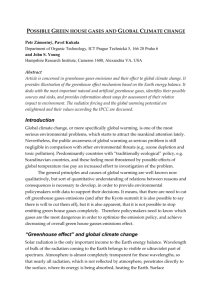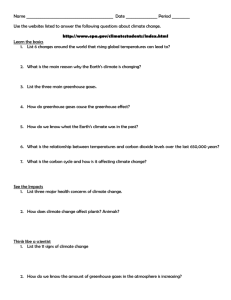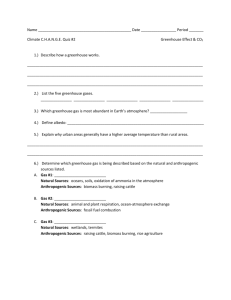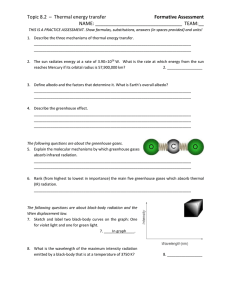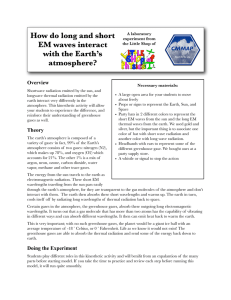Exercises radiation and absorption in the atmosphere W/m
advertisement
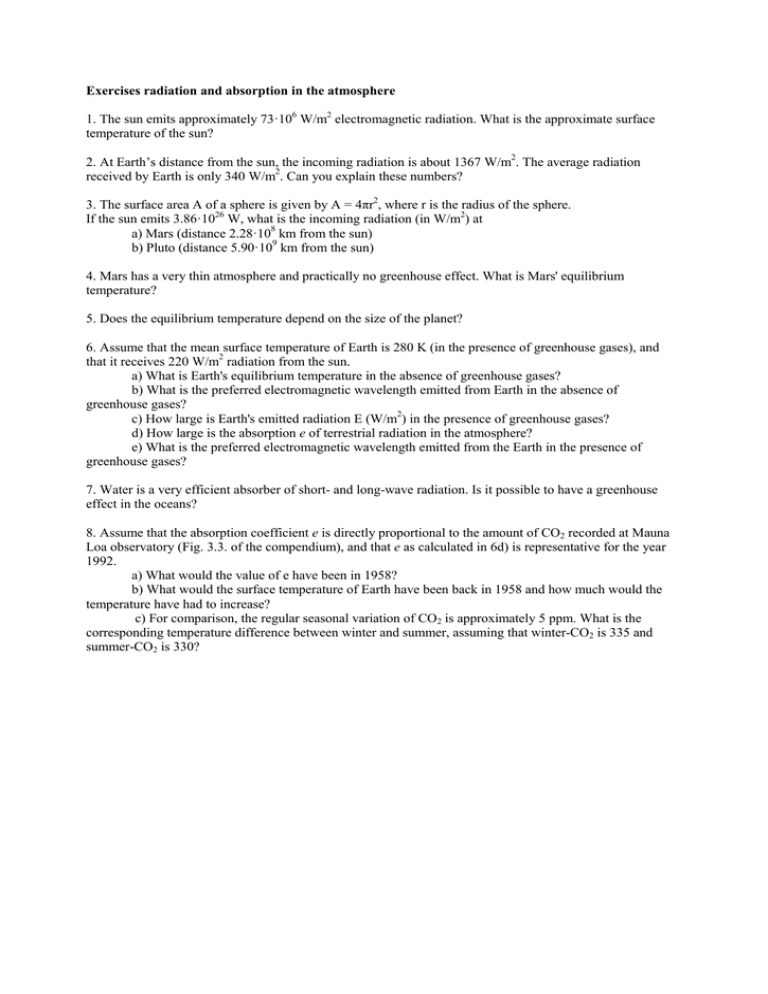
Exercises radiation and absorption in the atmosphere 1. The sun emits approximately 73·106 W/m2 electromagnetic radiation. What is the approximate surface temperature of the sun? 2. At Earth’s distance from the sun, the incoming radiation is about 1367 W/m2. The average radiation received by Earth is only 340 W/m2. Can you explain these numbers? 3. The surface area A of a sphere is given by A = 4πr2, where r is the radius of the sphere. If the sun emits 3.86·1026 W, what is the incoming radiation (in W/m2) at a) Mars (distance 2.28·108 km from the sun) b) Pluto (distance 5.90·109 km from the sun) 4. Mars has a very thin atmosphere and practically no greenhouse effect. What is Mars' equilibrium temperature? 5. Does the equilibrium temperature depend on the size of the planet? 6. Assume that the mean surface temperature of Earth is 280 K (in the presence of greenhouse gases), and that it receives 220 W/m2 radiation from the sun. a) What is Earth's equilibrium temperature in the absence of greenhouse gases? b) What is the preferred electromagnetic wavelength emitted from Earth in the absence of greenhouse gases? c) How large is Earth's emitted radiation E (W/m2) in the presence of greenhouse gases? d) How large is the absorption e of terrestrial radiation in the atmosphere? e) What is the preferred electromagnetic wavelength emitted from the Earth in the presence of greenhouse gases? 7. Water is a very efficient absorber of short- and long-wave radiation. Is it possible to have a greenhouse effect in the oceans? 8. Assume that the absorption coefficient e is directly proportional to the amount of CO2 recorded at Mauna Loa observatory (Fig. 3.3. of the compendium), and that e as calculated in 6d) is representative for the year 1992. a) What would the value of e have been in 1958? b) What would the surface temperature of Earth have been back in 1958 and how much would the temperature have had to increase? c) For comparison, the regular seasonal variation of CO2 is approximately 5 ppm. What is the corresponding temperature difference between winter and summer, assuming that winter-CO2 is 335 and summer-CO2 is 330?



